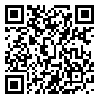Volume 13, Issue 3 (Fall 2009)
Physiol Pharmacol 2009, 13(3): 308-318 |
Back to browse issues page
Download citation:
BibTeX | RIS | EndNote | Medlars | ProCite | Reference Manager | RefWorks
Send citation to:



BibTeX | RIS | EndNote | Medlars | ProCite | Reference Manager | RefWorks
Send citation to:
Rafati M, Mokhtari-Dizaji M, Saberi H, Grailu H. Automatic measurement of instantaneous changes in the walls of carotid artery with sequential ultrasound images. Physiol Pharmacol 2009; 13 (3) :308-318
URL: http://ppj.phypha.ir/article-1-555-en.html
URL: http://ppj.phypha.ir/article-1-555-en.html
Abstract: (10017 Views)
Introduction: This study presents a computerized analyzing method for detection of instantaneous changes of far
and near walls of the common carotid artery in sequential ultrasound images by applying the maximum gradient
algorithm. Maximum gradient was modified and some characteristics were added from the dynamic programming
algorithm for our applications.
Methods: The algorithm was evaluated on the common carotid artery of 10 healthy volunteers. Local measurements
of vessel intensity, intensity gradient and boundary continuity are extracted for all of the sequential ultrasonic frames
throughout three cycles. We extracted the instantaneous changes of far and near arterial walls and hence the lumen
diameter. The manual measurements were applied and compared for validation of the automatic method. Peak systolic,
end diastolic and mean diameters extracted by the automated method were compared with the same parameters
measured by the manual method throughout three cycles.
Results: There was no significant difference between automated and manual methods (p>0.05) with paired t-test
analysis. In the verification study, correlation between automated and manual methods was excellent (R2 = 0.85,
p<0.05) with a negligible bias (0.003 mm) as determined by Bland Altman analysis.
Conclusion: It is concluded that computerized analyzing method can automatically detect the instantaneous changes
of the arterial walls in sequential B-mode images.
Type of Manuscript: Experimental research article |
Subject:
Cardiovascular Physiology/Pharmacology
| Rights and permissions | |
 |
This work is licensed under a Creative Commons Attribution-NonCommercial 4.0 International License. |





